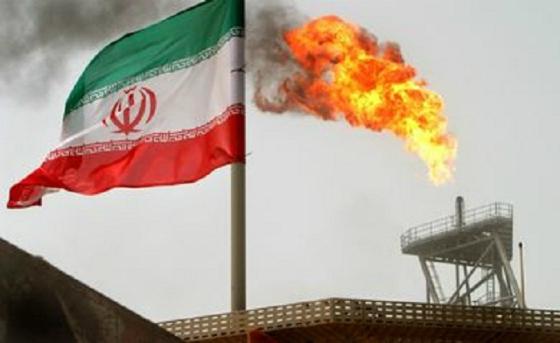Iran economy grew 12.5% in March 2016-17 compared to the preceding year, according to the Central Bank of Iran's latest report released on Sunday.
The strong growth is attributed mainly to increased oil production following the removal of international sanctions against Iran over its nuclear program as of January 2016.
GDP growth, without taking oil production into account, stood at 3.3%, the CBI said, noting that the oil sector registered a dramatic 61.6% growth last year.
The sanctions were lifted as part of a landmark deal Iran signed with world powers in July 2015. Tehran agreed to limit the scope of its nuclear program in exchange.
Government data show Iran’s crude oil production reached 3.8 million barrels per day by the end of the last fiscal year from around 3 million bpd in the previous year.
Under sanctions, crude output fell to 2.5 million barrels daily and exports were limited to just above 1 million bpd to a few customers in Asia.
However, Iran is allowed to pump an average of 3.8 million bpd by March 2018 under an OPEC deal aimed at eroding global inventories and lifting crude prices.
On average, Iran exported 400,000 barrels daily, or 64 million liters per day, of oil byproducts to buyers in the Middle and Far East in the fiscal 2016-17, up from around 220,000 bpd in the previous fiscal year.
Outbound shipments of oil byproducts are expected to rise by 200,000 barrels a day to 600,000 barrels daily in the current fiscal year, according to a report by the National Iranian Oil Products Distribution Company.
The CBI report also indicates that the “industry sector” expanded 6.9% last year—a remarkable improvement compared to the 4.6% contraction registered a year before.
Production in the agriculture sector expanded by 4.2%.
Construction was the only sector that contracted last year and registered a -13.1% growth.
Government and private consumption recorded a 3.8% and 3.7% growth respectively.
Gross fixed capital formation contracted by 3.7%.
Exports and imports of goods and services grew 41.3% and 6.1% respectively.
The CBI report comes after the Statistical Center of Iran put last year’s growth at 8.3% in a report released late May. According to the SCI, without taking the oil sector into consideration, the economy expanded by 6.3%
The SCI report indicated that the agriculture sector grew by 5%, the industry group, including mines, manufacturing, energy and construction, expanded by 11.3% and the services sector registered a 7.1% growth.
CBI and SCI both publish periodic statistics on Iran’s economy, but the two bodies’ data often differ, as they use different base years to calculate their data.
Iran’s economy emerged from recession in March 2014-15 fiscal year with a 3% growth after two years of recession when the economy contracted 5.8% and 1.9% back to back, according to the Central Bank of Iran.
Growth for March 2015-16 fiscal year has been put at -1.6% by CBI and 0.9% by SCI.
The World Bank’s Economic Monitor report for the Middle East and North Africa region published recently showed Iran’s growth in 2016 is estimated to have reached 6.4%, following a 1.8% contraction in the previous year, resulting from higher growth in the mining, manufacturing, services and agriculture sectors.
It added, however, that growth prospects in the medium term are expected to be modest due to near capacity oil production and weak non-oil sector activity.
“The latter will not pick up unless FDI recovers, the economy reconnects with the international banking system and more progress is made in implementing domestic reforms,” the report said.
The International Monetary Fund in its latest World Economic Outlook said Iran growth is projected at 3.3% for 2017, which will rise to 4.3% in 2018. The fund put the country’s growth for 2016 at 6.5%.
Financial Tribune
19 June
























































